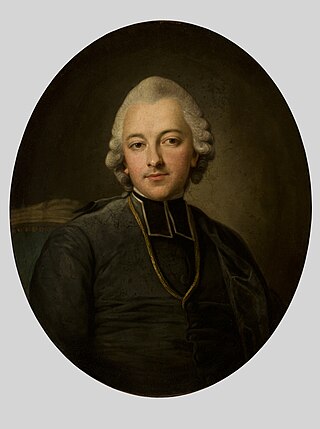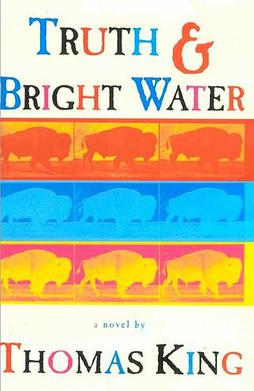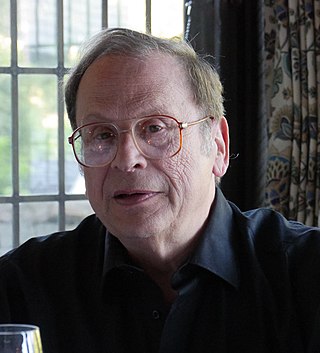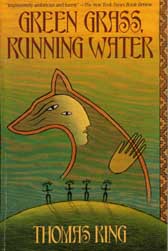
John Ernst Steinbeck was an American writer. He won the 1962 Nobel Prize in Literature "for his realistic and imaginative writings, combining as they do sympathetic humor and keen social perception". He has been called "a giant of American letters."

Political fiction employs narrative to comment on political events, systems and theories. Works of political fiction, such as political novels, often "directly criticize an existing society or present an alternative, even fantastic, reality". The political novel overlaps with the social novel, proletarian novel, and social science fiction.

The Grapes of Wrath is an American realist novel written by John Steinbeck and published in 1939. The book won the National Book Award and Pulitzer Prize for fiction, and it was cited prominently when Steinbeck was awarded the Nobel Prize in Literature in 1962.

The Pearl is a novella by the American author John Steinbeck. The story, first published in 1947, follows a pearl diver, Kino, and explores man’s purpose as well as greed, defiance of societal norms, and evil. Steinbeck's inspiration was a Mexican folk tale from La Paz, Baja California Sur, Mexico, which he had heard in a visit to the formerly pearl-rich region in 1940.

American literature is literature written or produced in the United States and in the colonies that preceded it. The American literary tradition is part of the broader tradition of English-language literature but also includes literature produced in languages other than English.

Thomas King is an American-born Canadian writer and broadcast presenter who most often writes about First Nations.

Gerald Robert Vizenor is an American writer and scholar, and an enrolled member of the Minnesota Chippewa Tribe, White Earth Reservation. Vizenor also taught for many years at the University of California, Berkeley, where he was Director of Native American Studies. With more than 30 books published, Vizenor is Professor Emeritus at the University of California, Berkeley, and Professor of American Studies at the University of New Mexico.

Sherman Joseph Alexie Jr. is a Native American novelist, short story writer, poet, screenwriter, and filmmaker. His writings draw on his experiences as an Indigenous American with ancestry from several tribes. He grew up on the Spokane Indian Reservation and now lives in Seattle, Washington.

The Winter of Our Discontent is John Steinbeck's last novel, published in 1961. The title comes from the first two lines of William Shakespeare's Richard III: "Now is the winter of our discontent / Made glorious summer by this sun [or son] of York". It is Steinbeck's only work to entirely take place on the East Coast of the United States; it is primarily set in Sag Harbor, New York.
Indian English literature (IEL), also referred to as Indian Writing in English (IWE), is the body of work by writers in India who write in the English language but whose native or co-native language could be one of the numerous languages of India. Its early history began with the works of Henry Louis Vivian Derozio and Michael Madhusudan Dutt followed by Rabindranath Tagore and Sri Aurobindo. R. K. Narayan, Mulk Raj Anand and Raja Rao contributed to the growth and popularity of Indian English fiction in the 1930s. It is also associated, in some cases, with the works of members of the Indian diaspora who subsequently compose works in English.

The Short Reign of Pippin IV: A Fabrication is a novel by John Steinbeck published in 1957; his only political satire, the book pokes fun at French politics.

Truth and Bright Water is a bildungsroman by Thomas King set in the Canadian Prairies on the Canada–United States border. The novel embeds a number of magical features within painstakingly realist prose, showing its affiliation with Magic realism.

Keith Maillard is a Canadian-American novelist, poet, and professor of creative writing at the University of British Columbia. He moved to Canada in 1970 and became a Canadian citizen in 1976.
Louis Dean Owens was a novelist and scholar who claimed Choctaw, Cherokee, and Irish-American descent. He is known for a series of Native-themed mystery novels and for his contributions to the then-fledgling field of Native American Studies. He was also a professor of English and Native American studies, and frequently contributed articles, literary criticism and reviews to periodicals. Owens died by suicide in 2002.
Literature of the 20th century refers to world literature produced during the 20th century.
Anna Lee Walters is a Pawnee/Otoe–Missouria author.

Mourning Dove or Humishuma was a Native American author best known for her 1927 novel Cogewea, the Half-Blood: A Depiction of the Great Montana Cattle Range and her 1933 work Coyote Stories.

Green Grass, Running Water is a 1993 novel by Thomas King, a writer of Cherokee and Greek/German-American descent, and United States and Canadian dual citizenship. He was born and grew up in the United States, and has lived in Canada since 1980. The novel is set in a contemporary First Nations Blackfoot community in Alberta, Canada. It gained attention due to its unique use of structure, narrative, and the fusion of oral and written literary traditions. The novel is rife with humor and satire, particularly regarding Judeo-Christian beliefs as well as Western government and society. Green Grass, Running Water was a finalist for the 1993 Governor General's Award in Fiction.
Peter Blue Cloud (Aroniawenrate) (1933 – 2011) was a Kahnawakeronon poet, and folklorist.
Native American literature is literature, both oral and written, produced by Native Americans in what is now the United States, from pre-Columbian times through to today. Famous authors include N. Scott Momaday, Leslie Marmon Silko, Simon Ortiz, Louise Erdrich, Gerald Vizenor, Joy Harjo, Sherman Alexie, D'Arcy McNickle, James Welch, Charles Eastman, Mourning Dove, Zitkala-Sa, John Rollin Ridge, Lynn Riggs, Hanay Geiogamah, William Apess, Samson Occom, Gerald Vizenor, Stephen Graham Jones, et al. Importantly, it is not "a" literature, but a set of literatures, since every tribe has its own cultural traditions. Since the 1960s, it has also become a significant field of literary studies, with academic journals, departments, and conferences devoted to the subject.












